We are accustomed to thinking of museums primarily for their content, but there are museums that are housed in wonderful buildings often set in unique landscape settings that add value to the visit, perhaps overlooking wonderful views or offering glimpses that are difficult to find elsewhere. So we wanted to take a journey across Italy in search of ten art and archaeology museums with beautiful locations overlooking the sea. A journey from the north to the south of the peninsula through institutions that preserve first-rate works and extremely relevant exhibits, plus they offer the possibility of spending a few moments of serenity while admiring the sea. Here are which ones!
The Civic Archaeological Museum of Ventimiglia was founded in 1938 and is named after Girolamo Rossi, the archaeologist who discovered Roman Albintimilium. Since 1989 the institute has been housed in the Fortezza dell’Annunziata, the fort that was built by the Savoy between 1831 and 1836 for defensive purposes, where the monastery of the Observant Friars Minor once stood. It is located in a strategic area of the coast, so the view has a way to sweep far away, reaching as far as Cap Esterel to the west and Bordighera to the east. The museum now houses more than 700 artifacts that tell the story of Albintimilium: this is mostly material from 19th-century excavations. However, there are also ancient works of art from the collection of Englishman Thomas Hambury, and then ceramics and pottery. The earliest history of the city, on the other hand, is documented by the historical and prehistoric section.
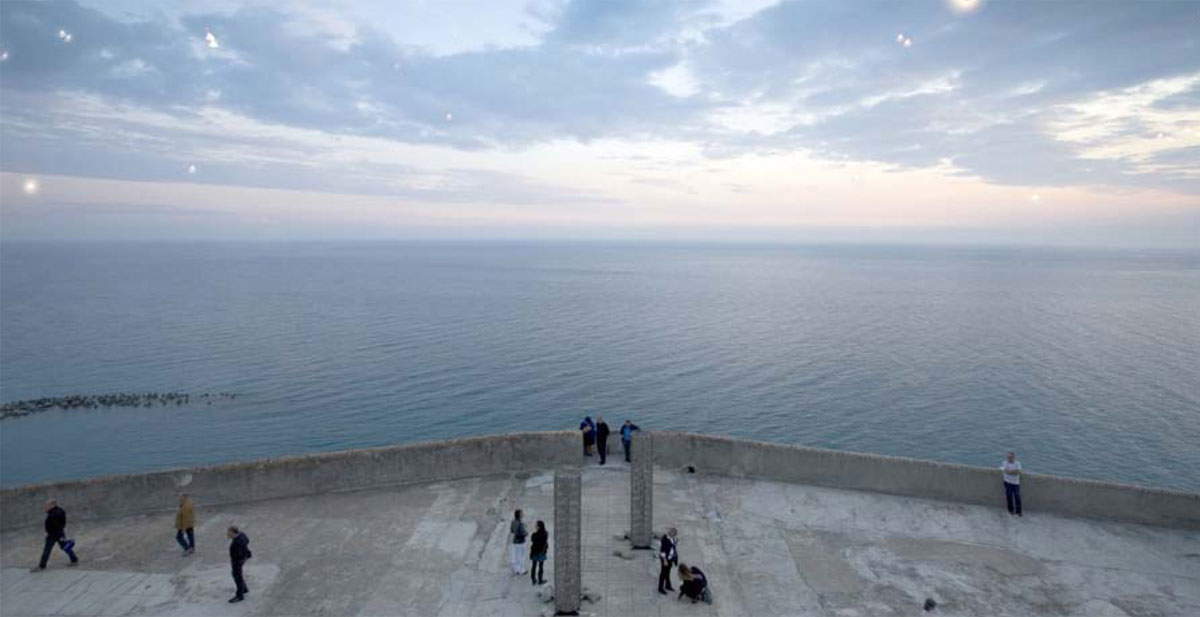 |
| The parade ground of the MAR - Museo Civico Archeologico “Girolamo Rossi,” overlooking the sea. Photos of the MAR |
This is the house, in the hills of Albissola Marina, where the great Danish artist Asger Jorn (Vejrum, 1914 Aarhus, 1973), a leading exponent of the Situationist International and the Co.Br.A. group, lived. Jorn decided to move here in 1957, three years after settling in the small Ligurian town near Savona.At the time of his settlement, the house was a simple stone and brick dwelling, which the artist was able to transform into a splendid artist’s residence filled with works of art. In time, Asger Jorn’s house became a frequent destination for artists, and today it is a very active museum, often organizing exhibitions, focusing especially on ceramics, the typical art of Albissola Marina, in which Jorn also excelled. Also read our detailed in-depth look at the Asger Jorn House Museum by clicking here.
 |
| Asger Jorn House Museum (Albissola Marina). Photo Friends of Casa Jorn |
Villa Durazzo is a sumptuous 17th-century mansion that dominates the oldest part of the village of Santa Margherita Ligure, on the Levante Riviera. It is also known as Villa Durazzo-Centurione: it was built at the behest of Doge Giovanni Luca Chiavari, on the remains of a Roman building from the 3rd century AD, and then passed by inheritance to the Durazzo family (Maria Chiavari, Giovanni Luca’s daughter, married Marquis Gerolamo Durazzo), but later belonged to the Centurione princes. The villa has undergone some remodeling but its appearance is not dissimilar to what it looked like in the seventeenth century. In the 19th century it was enriched with an exotic garden and neoclassical statues, and later became a hotel. It became municipal property in 1973 and is now a museum with works by such great names of seventeenth-century Liguria as Domenico Piola, Giovanni Andrea De Ferrari, Luciano Borzone and others. Don’t miss its garden overlooking the sea and the risseu, the cobblestones made of black and white stones, typical of Ligurian villas.
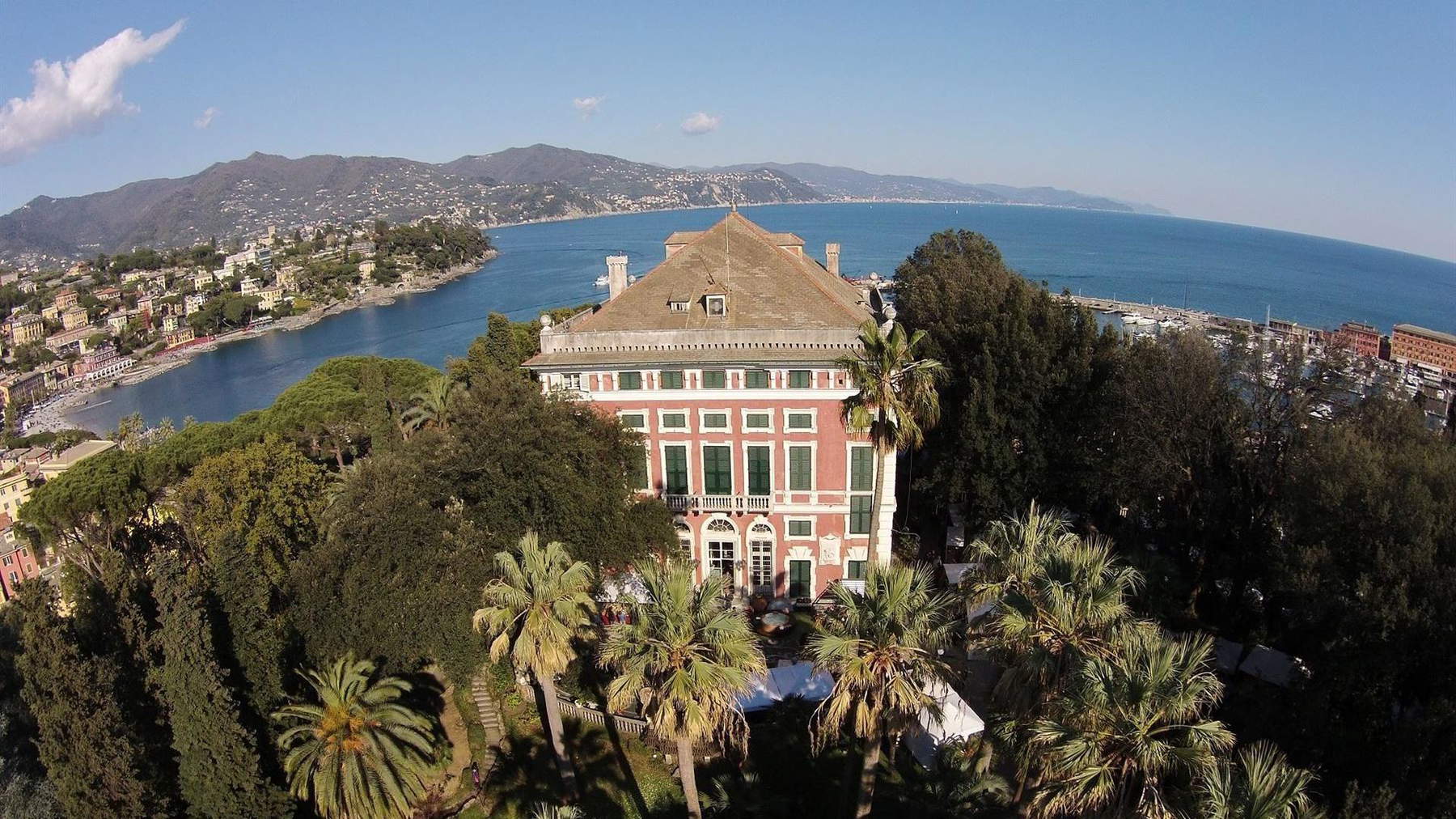 |
| Villa Durazzo (Santa Margherita Ligure). Photo Villa Durazzo |
The gallery that houses the collection started by physician Vittorio Rizzi, who lived in Sestri Levante in the late 19th and early 20th centuries, is housed in a building constructed a few steps from the sea in 1926 in the heart of the “Bay of Silence,” one of the two shores on which the town of Sestri Levante is built. The museum has been open to the public since 1967 and houses a significant collection of ancient art, with leading names such as Denijs Calvaert, Bartolomeo Schedoni, Giovanni Andrea De Ferrari, Andrea Ansaldo, Simone Barabino, Francesco Furini, Luca Giordano, and Domenico Parodi. The villa itself has been set up with the intention of evoking the atmosphere of an early 20th century bourgeois home, to immerse visitors in the spirit that animated the Rizzi family’s collecting.
 |
| Rizzi Museum Gallery (Sestri Levante). Photo by Domenico Garibotto |
Miramare Castle is one of the most iconic monuments in Trieste and all of northern Italy: it was built on the Miramar promontory by the Archduke of Austria, Maximilian of Habsburg, who had it built as a home for him and his wife Charlotte after visiting the area in 1855. Having fallen in love with this glimpse of the Julian coast, he immediately bought several lots and, on Christmas Eve 1860, was able to go there to reside with his beloved, in the castle designed by Austrian Carl Junker in an eclectic style. Unfortunately, Maximilian’s dream was tragically shattered a few years later (in our magazine you can read an article about the castle and one about the story of Maximilian and Charlotte). Today the museum is one of the most visited monuments in northern Italy: set in a vast park, it contains the art collections of Maximilian and Charlotte, and each room reminds the public of their sad story.
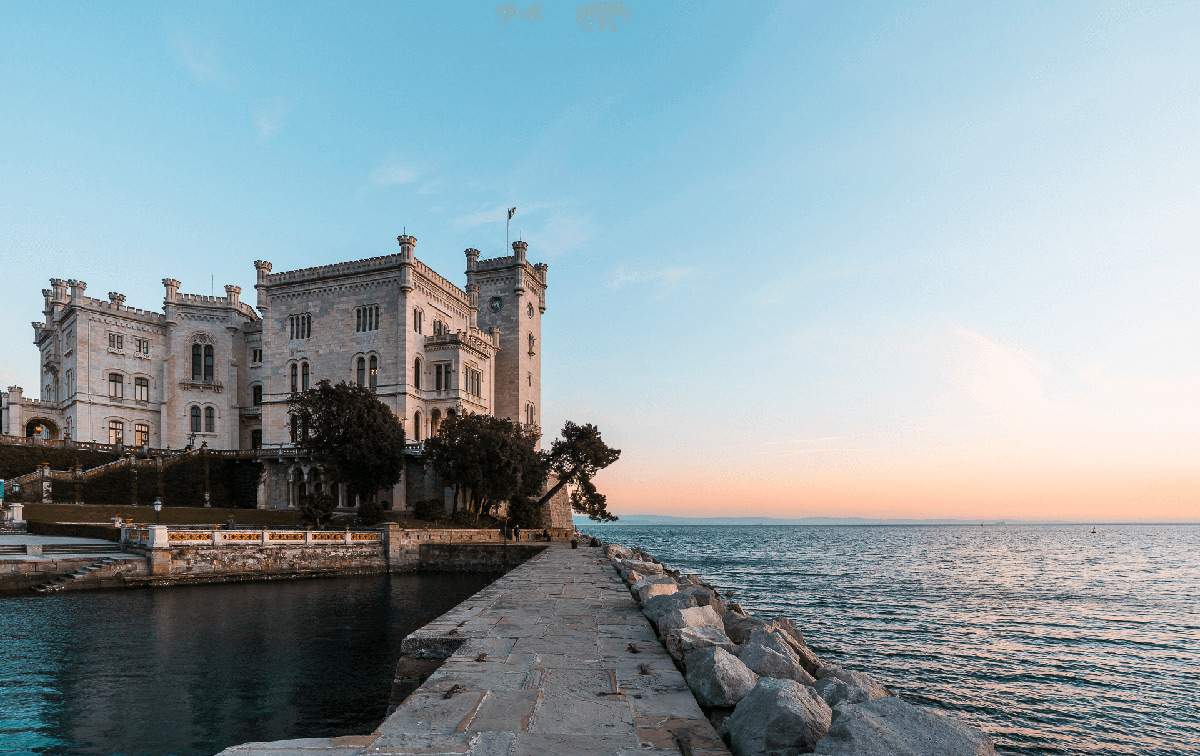 |
| Miramare Castle (Trieste). Photo by Fabrice Gallina archive PromoTurismoFVG |
The Viareggio Municipal Gallery of Modern and Contemporary Art is housed in the Palazzo delle Muse, a historic building in Piazza Mazzini, overlooking the great beach of the Pearl of the Tyrrhenian Sea. It is one of the most important modern art museums in Tuscany and houses a collection of more than 3,000 works by some 750 20th-century artists. In addition, GAMC has the most important public collection of works by Lorenzo Viani, one of the leading European interpreters of early 20th-century expressionism. The main collecting nuclei are those of the Viareggio Prize, the Pieraccini Donation, and the Lucarelli Donation, but the museum has continued to be constantly enriched, and its collection today includes works by artists such as Giorgio De Chirico, Felice Casorati, Filippo De Pisis, Ennio Morlotti, Mario Sironi, Ardengo Soffici, Renato Guttuso, Fernand Léger, Piero Dorazio, Pierre Alechinski, Moses Levy, Gino Rossi, Giulio Turcato, Antonio Corpora, Carlo Carrà, and many, many others.
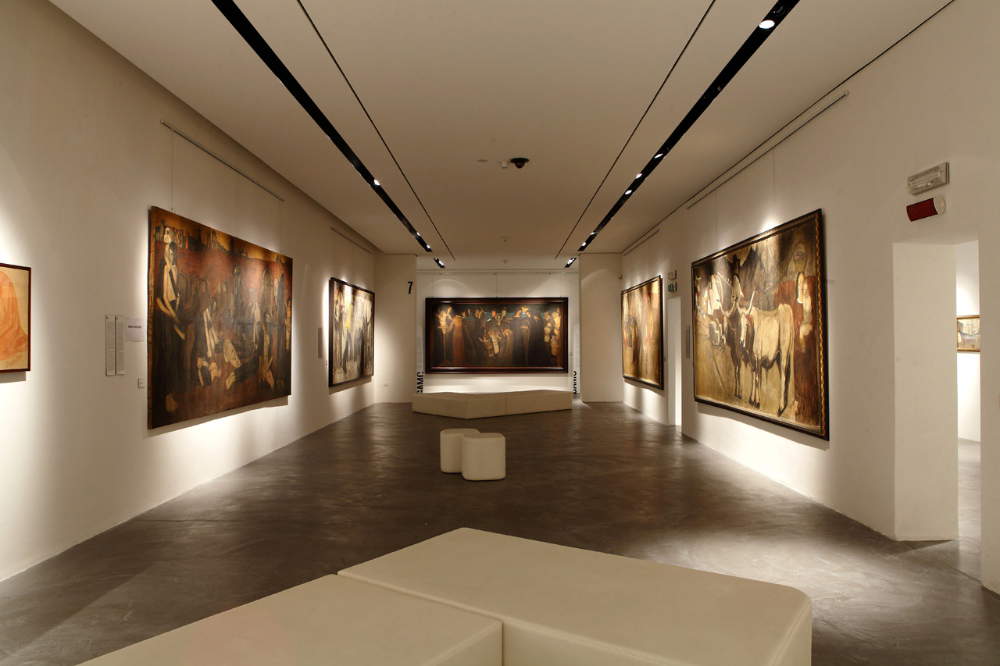 |
| GAMC - Gallery of Modern and Contemporary Art (Viareggio). Photo Visit Tuscany |
The Museo Civico del Mare e della Navigazione Antica (Civic Museum of the Sea and Ancient Navigation) is housed in the Santa Severa Castle, one of the most impressive and famous in central Italy: it is located on the Latium coast north of Rome. The museum opened its doors in 1993 and underwent a major redesign in 2016 that transformed it into the institution we see today. Part of the collection houses artifacts that introduce the public to the subject of underwater archaeology and ancient navigation, with several objects collected from the seabed that tell the story of the ancient settlements of Alsium, Centumcellae, Pyrgi, and other centers on the Latium coast. Amphorae, pottery, wreck fragments, reliefs and various objects illustrate the world of ancient navigation.
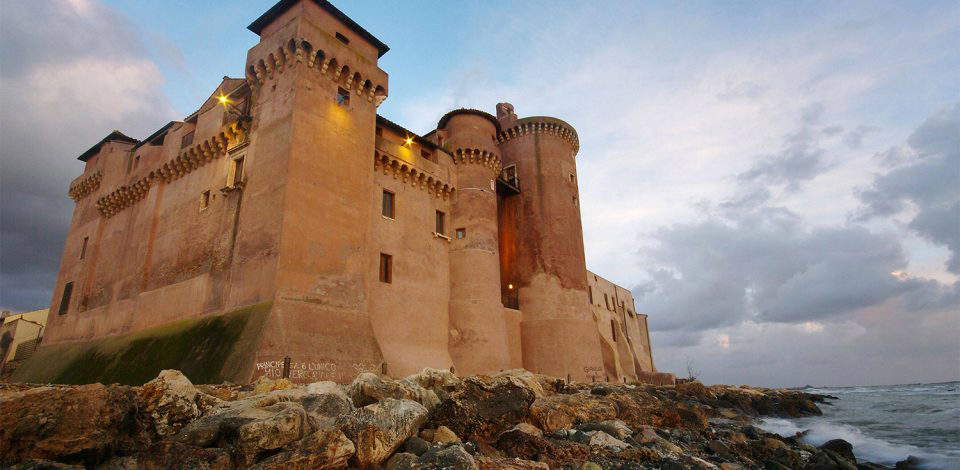 |
| The Castle of Santa Severa, home of the museum. Photos of the Civic Museum of the Sea and Ancient Navigation. |
It is located in the hamlet of Piana di Sorrento and is housed in the Villa de Sandro di Fondi. The museum is named after the French archaeologist and historian Georges Vallet, and illustrates the ancient history of the Sorrento Peninsula and the Amalfi Coast from prehistoric times to the Roman era. Exhibits ranging from the 2nd millennium B.C. to the first centuries A.D. are on display. It opened its doors in 1999 and is now part of the Polo Museale della Campania. It is the first archaeological museum in the area, created with the aim of collecting and documenting the results of excavation campaigns conducted in the Sorrento peninsula. The venue, a splendid neoclassical villa, allows a beautiful view of the Gulf of Sorrento.
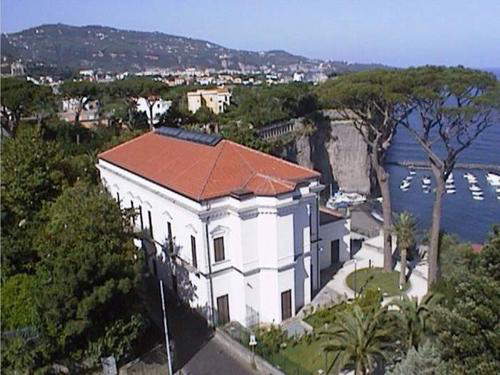 |
| Georges Vallet Archaeological Museum (Sorrento) |
One of the most important museums in Apulia, the picture gallery was officially founded on July 12, 1928, and since 1936 has been housed in the Palazzo della Provincia, which overlooks Bari’s seafront. The museum is named after one of Puglia’s greatest painters of the 18th century, Corrado Giaquinto. The collections document the development of the arts in Apulia from the 11th to the 20th century, both showing works by great Apulian artists and by artists from outside who worked for the region. Present are a medieval section, Venetian paintings (Puglia centuries ago was ruled by Venice) by authors such as Antonio and Bartolomeo Vivarini, Giovanni Bellini, Paris Bordon, Paolo Veronese, and Jacopo Tintoretto, works by great Apulian artists beginning with Giuseppe De Nittis, and masterpieces by southern artists, from Luca Giordano to Francesco De Mura, Domenico Morelli to Teofilo Patini. Also present are works by Giovanni Boldini and other nineteenth-century greats: important, pe resemple, is the nucleus of Macchiaioli painting with works by Giovanni Fattori, Silvestro Lega, Giuseppe Abbati, Cristiano Banti, Telemaco Signorini, Raffaello Sernesi and others, and early twentieth-century works, from Angelo Morbelli to Giuseppe Pellizza da Volpedo, from Lorenzo Viani to Carlo Carrà, from Filippo de Pisis to Giorgio De Chirico.
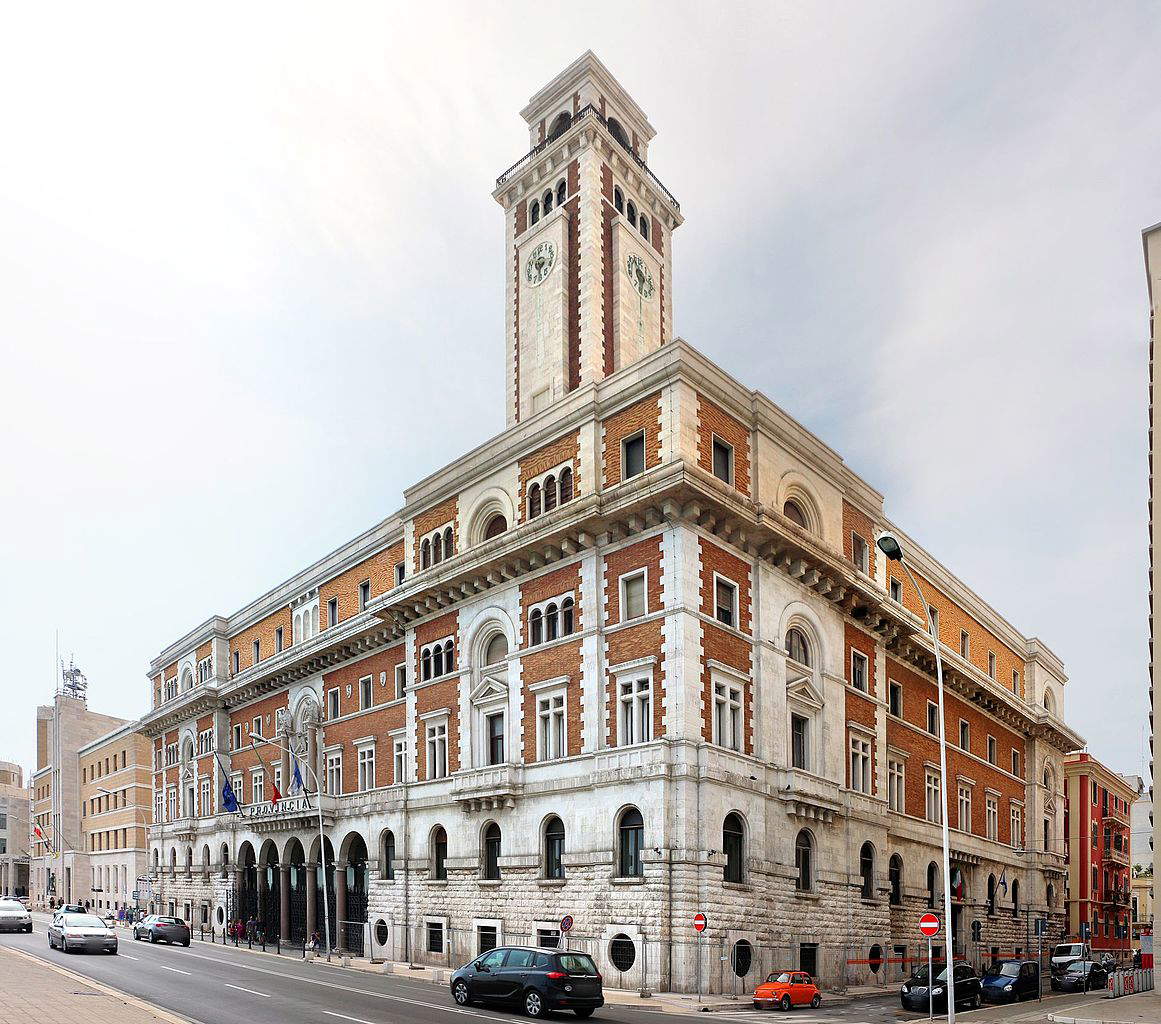 |
| Corrado Giaquinto Art Gallery (Bari). Photo by Francesco Bini |
This is the most vibrant center for contemporary art in Puglia: founded in 1998 and named after Pino Pascali, it moved to its current location in 2012. The museum was established with the aim of promoting, exhibiting and enhancing the work of Pino Pascali (Bari, 1935 Rome, 1968), one of the greatest exponents of Arte Povera, and every year organizes an award named after him. On display in the museum are some of the artist’s most important works, as well as the works of prize winners (from Adrian Paci to Jan Fabre, Bertozzi & Casoni to Mat Collishaw), and it often hosts major exhibitions. Learn more about the Pino Pascali Museum Foundation in the dedicated article by clicking here.
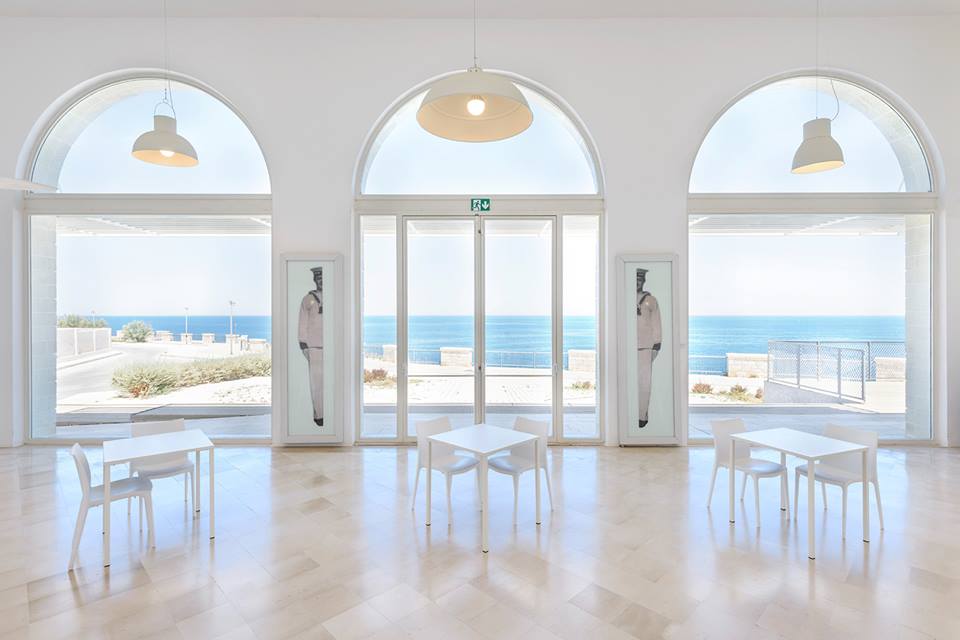 |
| Pino Pascali Museum Foundation (Polignano a Mare) |
 |
| 10 art and archaeology museums with beautiful venues overlooking the sea |
Warning: the translation into English of the original Italian article was created using automatic tools. We undertake to review all articles, but we do not guarantee the total absence of inaccuracies in the translation due to the program. You can find the original by clicking on the ITA button. If you find any mistake,please contact us.